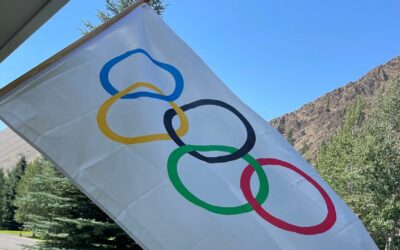Although frequent and sometimes debilitating, exercise associated muscle cramps (EAMC) have been poorly understood by the scientific and medical community for years. Many of the theories about EAMC have been from anecdotal evidence, not controlled studies.
Dehydration-Electrolyte Imbalance Theory
The dehydration-electrolyte imbalance theory is most commonly cited as the causes of cramps. During exercise fluid is lost though sweat. Along with water you are also losing electrolytes (sodium, potassium, magnesium and calcium) all of which are essential nutrients for proper muscle function.
Unfortunately, the data does not support this theory. Martin Schwellnus at the University of Cape Town reviewed the literature and found “the ‘electrolyte depletion’ and ‘dehydration’ hypotheses do not offer plausible pathophysiological mechanisms with supporting scientific evidence that could adequately explain the clinical presentation and management of EAMC.”
Numerous studies cited showed no significant difference between blood volume (an indicator of dehydration) between cramping and non cramping athletes. Additionally, the theory does not address cold weather exercise when dehydration is less of a factor.
Furthermore, if dehydration and electrolyte imbalance are the causes of EAMC simply ingesting adequate amounts of a correctly balanced sports drink should alleviate the problem. To test this, scientists had athletes drink carbohydrate-electrolyte fluids in equal amounts to fluid lost though sweat. Nearly 2/3 of the athletes still cramped! In addition, stretching, not fluid intake is the recommended relief for EAMC.
Altered Neuromuscular Control Hypothesis
A new idea is emerging to explain EAMC, the “altered neuromuscular control” hypothesis. This theory suggests that as muscles tire, neuromuscular coordination and control become impaired.
Muscles act in pairs, and smooth muscle action requires one muscle receiving a signal to contract and shorten while the opposite muscle receives a signal to lengthen. When muscle fatigue sets in these signals become faulty. The muscle continues to be simulated to fire without an equal inhibitory signal being sent to the opposing muscle. It is this imbalance in the neuromuscular signals that cause EAMC.
Although evidence from cat studies has supported this theory, Schwellnus states “Scientific evidence for the “altered neuromuscular control” hypothesis is based on evidence from research studies in human models of muscle cramping, epidemiological studies in cramping athletes, and animal experimental data. Whilst it is clear that further evidence to support the “altered neuromuscular control” hypothesis is also required, research data are accumulating that support this as the principal pathophysiological mechanism for the aetiology of EAMC.”
My Experience
My experience teaching clients posture exercises leads me to believe there must be a neuromuscular component to EAMC. Clients will cramp trying to do a new exercise which is awaking muscles that have not been used in a long time. I also see consistent patterns of cramping when activating specific muscles. The cramping does reduce as clients repeat the exercises and gain more strength and function.
Prevention is the Best Medicine!
While the cause of EAMC is still under investigation the best prevention is:
-
Stay hydrated
-
Warm-up before and cool-down following exercise
-
Fuel your muscles with adequate carbohydrates and electrolytes
-
During exercise ingest an electrolyte drink for efforts over an hour
-
Increase training duration and intensity gradually
-
Stretch to improve flexibility to attain a healthy range of motion in your joints
-
Properly fit your equipment (e.g. bicycle geometry)
-
Massage your muscles regularly


